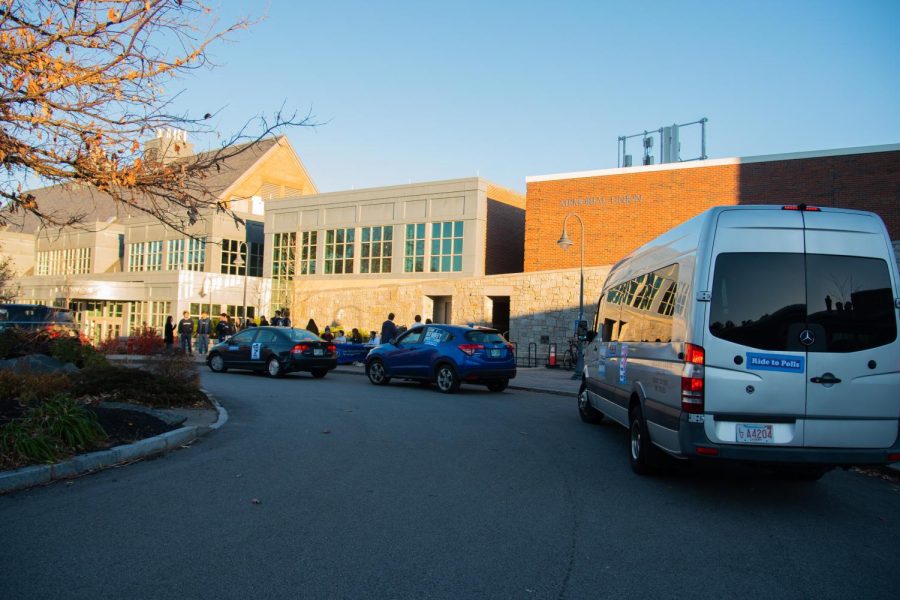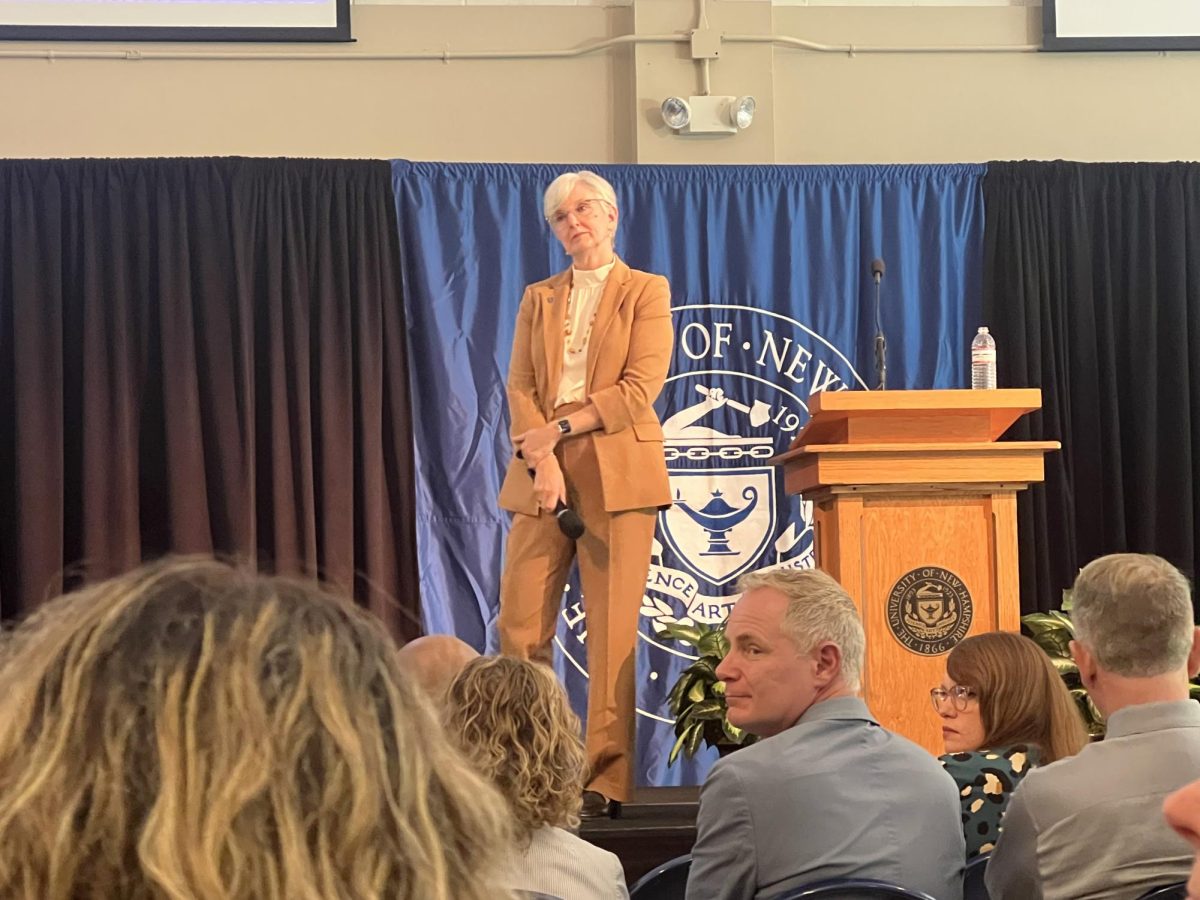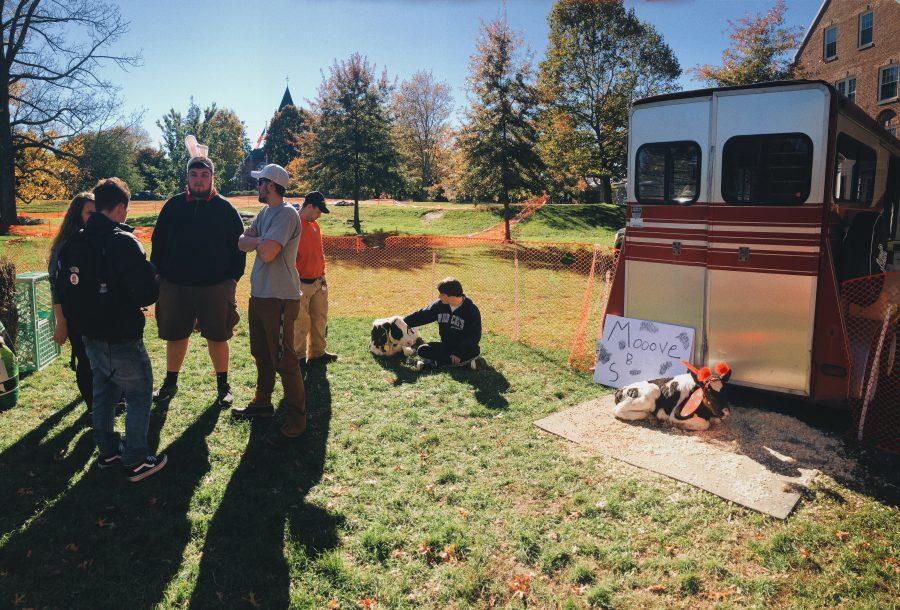By Hadley Barndollar, Contributing Writer

A murky Pettee Brook next to Madbury Commons construction site. After a passer-by saw construction worker pouring sediment in the water, action was taken.
On Monday morning, the Madbury Commons construction site was seen dumping sedimentation into the Pettee Brook in Durham. The brook appeared extremely polluted and murky; quite different from its natural state. Several passersby noticed a green hose that was pumping into the brook. The town was immediately contacted.
Anne Lightbody, a resident of Durham and a University of New Hampshire earth sciences professor, observed the incident when she left the dentist’s office located on Mathes Terrace.
“Walking across the foot bridge between Mathes Terrace and the Pettee Brook parking lot a little before 9 a.m. on Monday morning, I noticed high levels of turbidity in Pettee Brook, which had turned the water from dark and clear to opaque tan,” Lightbody said. “Looking closer, I was surprised to see that high levels of suspended sediment seemed to be entering the brook.”
Lightbody then noticed the source of the discoloration.
“The stream bend was close to the Madbury Commons construction site, and the outlet hoses from a few portable pumps were draped over the boundary of the site, so it appeared that the sediment entering Pettee Brook might be coming from the construction site.”
Lightbody took precaution and contacted Todd Selig, Durham town administrator. Within minutes, town officials had contacted the construction firm and were taking steps to address the problem.
According to Selig, the issue was “identified, assessed and addressed within a span of a few hours on Monday morning.”
Durham Town Engineer April Talon debriefed Selig on the incident and what took place that morning, as well as the outcome.
“They are pumping water out of the excavation for building B and were not using a silt bag this morning, which helps filter discharge water from a pump,” Talon said. “Since flagging this issue this morning, they have added the silt bag. The silt bag can only filter so well, and that’s why the water still appears murky.”
Silt bag aside, the construction site has been warned that this was an improper and environmentally unfriendly choice.
“They have been instructed to not discharge to the brook at all [even with a filter bag] and to use other methods for dealing with dewatering,” Talon said. Talon referred to this as an “unacceptable practice.”
PROCON of Manchester is the construction manager of the project. While their statement differed from that of the Durham town engineer, they did confirm that the situation had been taken care of.
“A situation occurred in which a filtration bag clogged for a short period of time causing a small amount of sediment to be released into Pettee Brook,” said Kimberly Cochran, general counsel of PROCON. “This situation was corrected immediately and poses no threat to the environment. This area will be monitored to prevent any future overflow. The city engineer and project civil engineer are fully aware of the situation and satisfied with its resolution.”
Professor Lightbody was able to shed light on the damages of sedimentation.
“Sediment pollution is one of the most widespread problems in streams and rivers in the U.S.,” she said. “High levels of sediment can clog fish gills, kill the small insects that fish eat, interfere with clams and other bottom-dwelling animals and damage aquatic vegetation. In addition, sediment may be contaminated by other pollutants, including heavy metals, fertilizers and industrial chemicals. As a result, there are strict
guidelines in place to prevent high levels of sediment in waterways.”
Ultimately, Lightbody felt it was her duty to address this issue, not only as an earth sciences professor, but also as a Durham resident.
“As a resident of Durham and a member of the university community, I feel responsible for helping to protect our natural resources,” Lightbody noted. “I am glad that I was able to play a small role in stopping pollution in one of our campus brooks.”
The Madbury Commons complex is developed by Golden Goose Capital and when built, will be made up of 126 luxury student apartments.

























